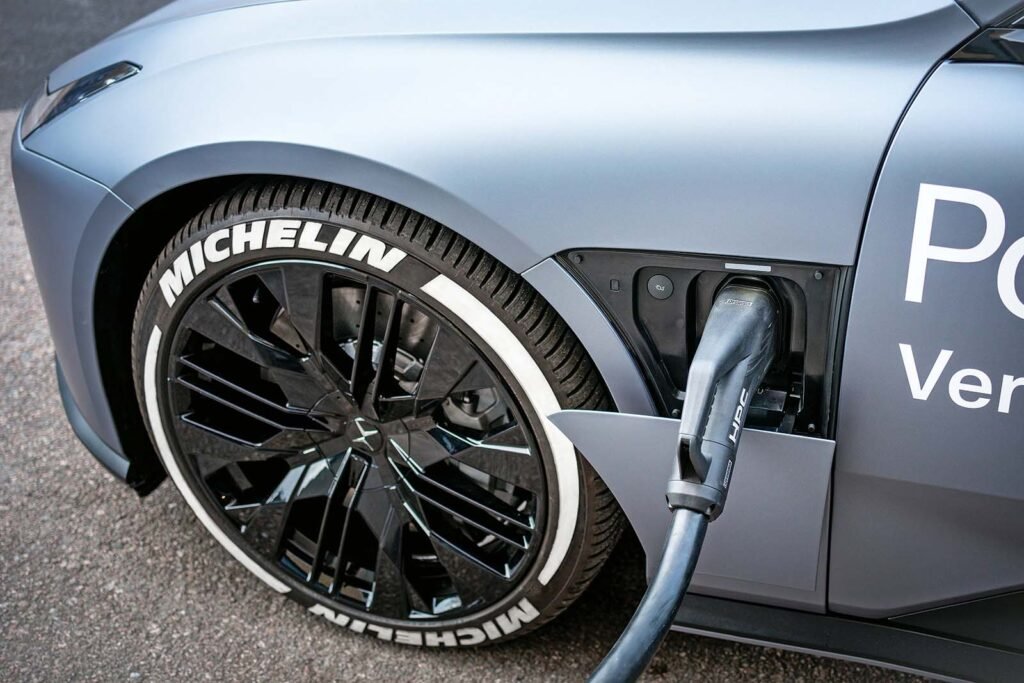Emerging technologies are often so flawed that it’s impossible to imagine them getting any better beyond that stage. Such is the case with electric cars and the still-thorny issue of how long it takes to charge one on longer journeys.
Leaving aside charger availability, it is still unacceptable for many drivers to charge a 400V car from 10 or 20% to 80% in 45 minutes, and an 800V car in, say, 30 minutes.
In 2021, we reported on how Storedot had developed a silicon-dominant lithium-ion battery anode technology it called XFC (for “extreme fast charge”). The technology was still in the lab phase at the time, but the company expected it to reduce charging times by 50% at no additional cost.
It was recently proven that the technology works not only at laboratory level, but also in a full-fledged battery pack in a modern, drivable car.
The test was conducted by Polestar, Storedot’s technology partner, using a prototype Polestar 5. Polestar engineers set up a test to charge the battery from 10% state of charge (SOC) to 80% in 10 minutes, but in fact the technology exceeded expectations by a small margin, reaching 82% in the allotted time.
A 77 kWh battery pack was specially commissioned for the car, and Polestar said its capacity can be adjusted up to 100 kWh. As it stands, the 10-minute charging time would equate to an increase in range of 200 miles.
However, the reality of using electric vehicles on longer journeys, and what these types of figures deliver in practical terms of convenience, will often not tell the whole story. One important point that emerges from the test concerns a clear improvement in the charging curve.
Typically, fast charging speeds can decrease significantly as the battery’s SOC increases during charging. So by the time a battery reaches 80%, it may be charging much slower than it would at 10% or 20%.
In this test, the opposite happened. Polestar engineers saw the charging speed increase from 310kW at 10% SOC to over 370kW at 80%. This makes it much more worthwhile to grab a ‘splash and dash’ charge during a stop on a journey for another reason, when the battery isn’t quite as depleted. A driver plugging in at 50% SOC can be back at 80% in just five minutes.
Those 10- and 5-minute time frames are much closer to refueling a car with an internal combustion engine on gasoline or diesel, especially since you don’t have to stand at the pump and perhaps don’t have to wait in line either. to pay.
Aside from the obvious convenience for the driver who is charging, ultra-fast charging speeds also mean the chargers are freed up for the next person more quickly.
Polestar considers this a world first. It said nothing had been added other than the battery pack and the 5 still had its stock cooling pump and fan. It also said the battery technology could appear in its production cars in the next two to three years.

